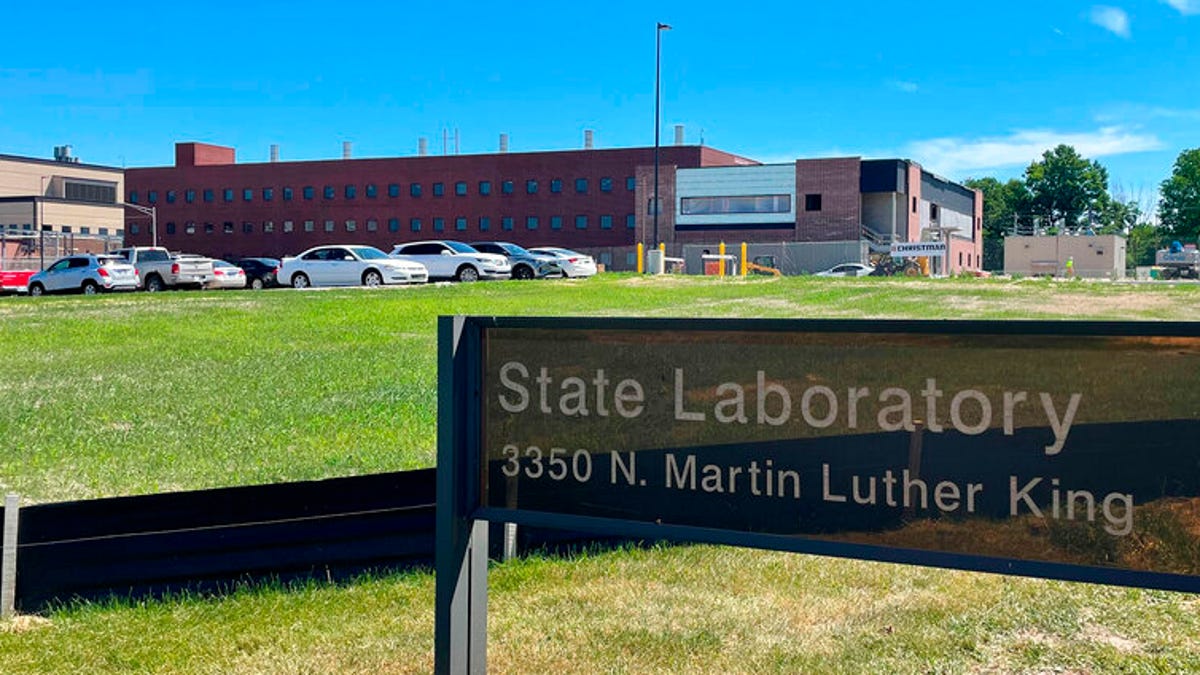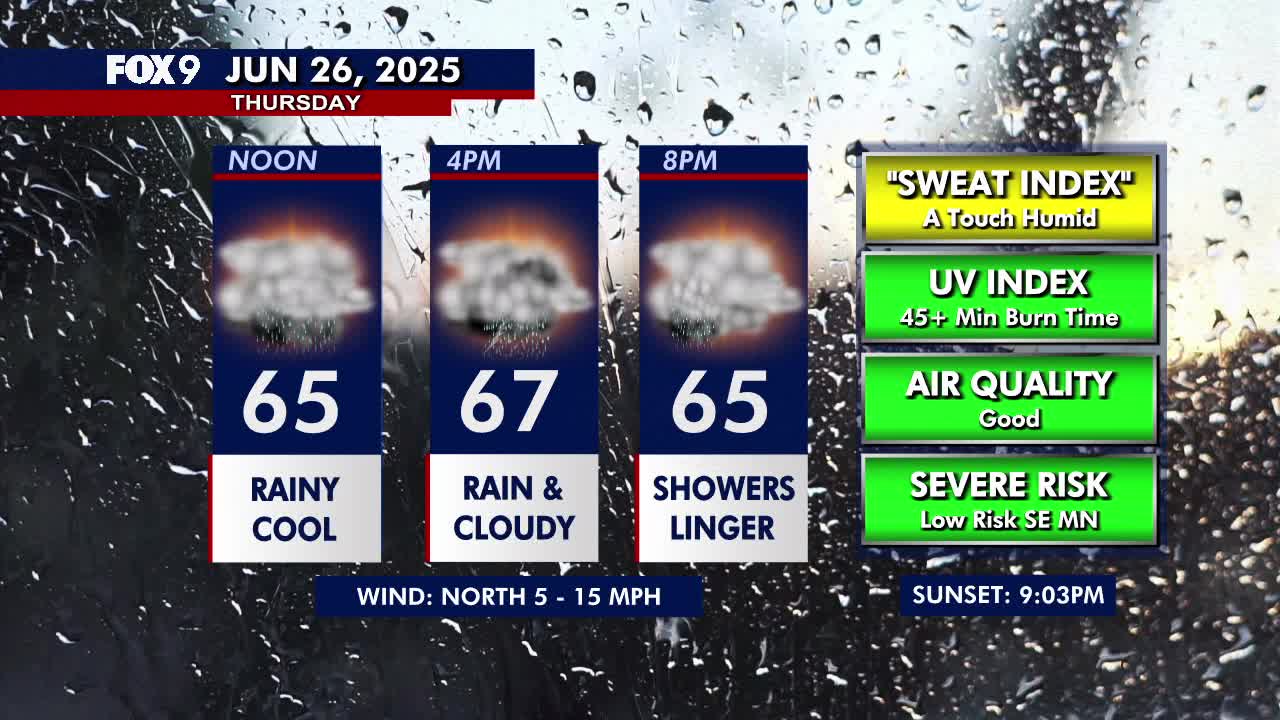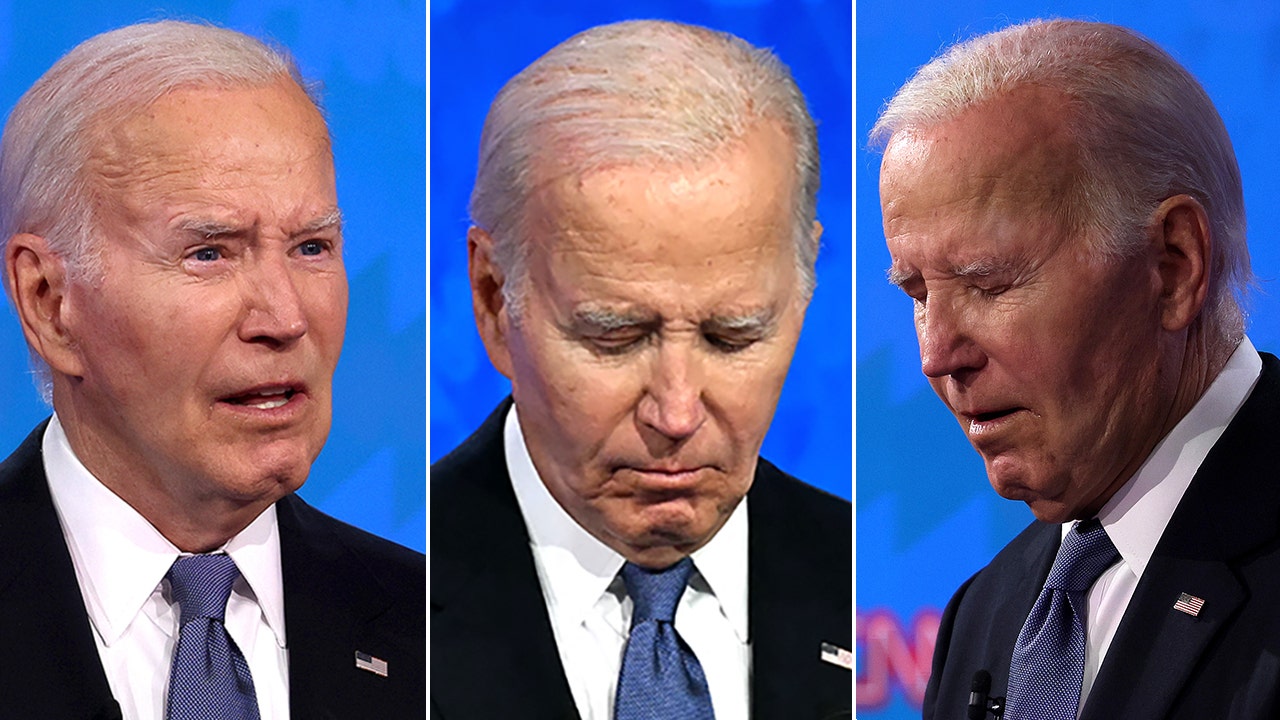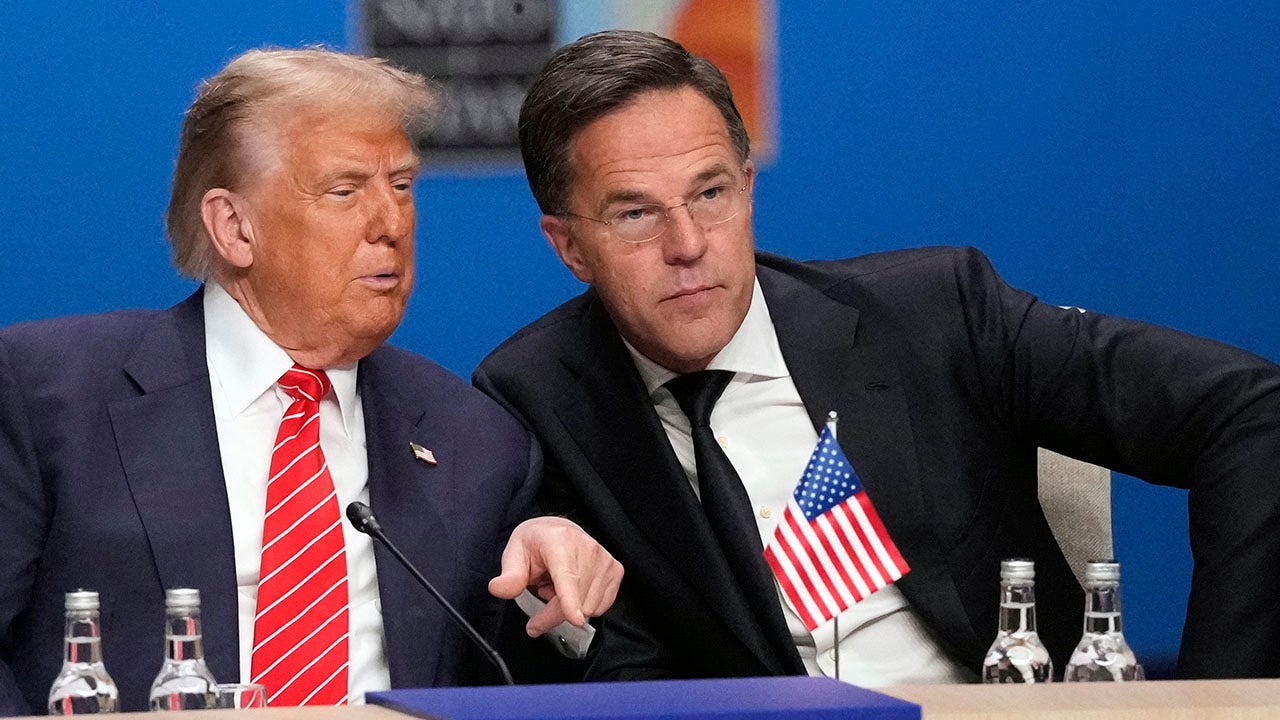Montana
TikTok asks US judge to block Montana ban before Jan. 1 effective date
/cloudfront-us-east-2.images.arcpublishing.com/reuters/FTPQEWK6JBPMFK5BF3LUGN45UI.jpg)
WASHINGTON, July 5 (Reuters) – TikTok Inc on Wednesday asked a U.S. judge to block enforcement of a Montana state ban on use of the Chinese-owned app before it takes effect on Jan. 1.
TikTok, which is owned by China’s ByteDance and filed suit in May, asked U.S. District Judge Donald W. Molloy to issue a preliminary injunction to block the first-of-its-kind U.S. state ban on several grounds, arguing it violates the First Amendment free speech rights of the company and users.
TikTok Global Business Solutions President Blake Chandlee said in a court filing the Montana ban “will cause significant and irreversible harms to our business and our brand” and would harm “relationships with advertisers and business partners across the country and around the world.”
TikTok also argues the ban is pre-empted by federal law because it intrudes upon matters of exclusive federal concern and violates the U.S. Constitution’s Commerce Clause, which limits state authority to enact legislation that unduly burdens interstate and foreign commerce.
TikTok, which is used by more than 150 million Americans, has faced growing calls from U.S. lawmakers for a nationwide ban over concerns about possible Chinese government influence over it. TikTok insists in its lawsuit it “has not shared, and would not share, U.S. user data with the Chinese government, and has taken substantial measures to protect the privacy and security of TikTok users.”
Chandlee said if the ban takes effect “we expect that additional advertisers and business partners will pull back from working with TikTok Inc (which is the entity that receives income from U.S. advertisers, including in Montana).”
Montana could impose fines of $10,000 for each violation by TikTok. The law does not impose penalties on individual TikTok users.
TikTok estimates 380,000 people in Montana use the video service, or more than a third of the state’s 1.1 million people.
Former President Donald Trump in 2020 sought to bar new downloads of TikTok and Chinese-owned WeChat, a unit of Tencent (0700.HK), and related transactions, which the companies said at the time could have effectively barred U.S. use of the apps, but a series of court decisions blocked the bans from taking effect.
TikTok’s lawsuit names Montana Attorney General Austin Knudsen, who is charged with enforcing the law. Knudsen’s office did not immediately respond to a request for comment on Wednesday.
Reporting by David Shepardson; Editing by Himani Sarkar, Robert Birsel
Our Standards: The Thomson Reuters Trust Principles.

Montana
Viewpoint: Montana Board of Housing celebrates 50 years

Cheryl Cohen
Many of us can vividly recall our first apartment rental experiences. For me, it was a single-family home shared with three college roommates, then an upper floor in a triplex where the kitchen fan spun itself off the ceiling and crash landed on the dining room table, followed by a non-conforming daylight basement unit with mold growing on every window. These were not glamourous experiences, but they were what I could afford and what was available on the market.
Some of us have been blessed, through hard work, luck and favorable market conditions, to become first-time homebuyers. For me, it was a sweat equity short sale under the third runway easement of a large international airport necessitating over 60 cubic yards of debris removal in the first weekend. But it was our home, our garden, our sanctuary and we took pride in our amateur DIY renovation efforts.
Those of us who work in the affordable housing space have the privilege of supporting individuals and families with their first ventures in apartment leasing, transitioning to a rental home they can better afford and even witnessing the American Dream in action at the closing table as a family receives the keys to their first home.
Over the last 50 years, the Montana Board of Housing, which is administratively attached to the Montana Department of Commerce, has partnered with organizations statewide who regularly experience these inspiring moments. Imagine assisting an individual moving inside after experiencing homelessness for a decade or more, or supporting a single mom regaining custody of her little boy with a safe, affordable apartment on Christmas Eve, or helping seniors stay in their homes with a fair and reputable Reverse Annuity Mortgage loan or providing first-time homebuyer counseling to a family who works and saves for a down payment to close on their first home.
I’ve been fortunate to experience many such moments throughout my career, as have all members of the MBOH team. Each time, these moments remind me of a childhood memory. My parents, an electrician and a nurse, worked to build a new construction home for our family. My brothers and I would hang out at the job site after school (safely) while my dad ran the electrical. My mom, a music lover, asked my dad to wire surround sound speakers in various rooms of the house. The day we moved in, mom cranked the stereo with Kenny G’s saxophone music and ran through the house crying. My parents both came from humble backgrounds; it had been a long journey of saving and sacrificing to build our new home. I credit this memory and their hard work for my chosen career path.
The MBOH certainly tracks all manner of data, but it’s the human impact on Montana families and communities – which cannot be easily summed up in loan production volume or affordable rental unit counts – that drives our mission. With a safe and affordable home, families can thrive and flourish, communities become convening places for neighbors and new friendships and children retain stability in school.
With a safe and affordable home, individuals have more flexibility to take risks and pursue entrepreneurial ventures, educational attainment in children improves and overall health and well-being are enhanced. A safe, affordable home is foundational to our ability to reach our full potential; without it, the stress of stacked-up bills and difficult decisions whether to purchase food, medicine or those desperately needed new shoes for our kids monopolize our minds every minute of every day.
The MBOH’s cumulative support of first-time homebuyers includes 47,700 low-interest rate primary mortgage and down payment assistance loans, equating to nearly $3.8 billion dollars statewide. In addition to its support of Montana homebuyers, the MBOH portfolio includes over 9,500 affordable apartments and resident-owned mobile homes with long-term periods of affordability (30 to 50 years) and an in-house mortgage servicing portfolio with over 6,200 active loans. You can learn more about our history and impact on our website, which includes a slideshow video and timeline.
Perhaps you or a person you know has benefited from an MBOH loan, or you might live in an affordable apartment constructed with Housing Tax Credits allocated by our agency. And even if you don’t, you might recall a time in your life that you experienced housing instability due to a spousal separation, loss of a job or a health diagnosis that upended your entire life and finances.
Individuals and families supported by MBOH programs have experienced these and other struggles. We all need a hand up sometimes, and I’m tremendously proud that the MBOH – including our Board, staff, partners, investors, participating lenders, developers and others – could be this hand up for so many Montanans.
On June 19, 2025, Governor Gianforte signed HB 924 into law, establishing a new Montana housing trust within the broader Growth and Opportunity Trust. This legislation will provide statutory appropriations for affordable housing for the first time in Montana state history – but we won’t rest on our laurels; with your continued support, we’re rolling up our sleeves for another 50 years and beyond!
– Cheryl Cohen, MBOH Executive Director and Housing Division Administrator at the Montana Department of Commerce
Montana
Former Montana US Rep Pat Williams, who won a liberal- conservative showdown, dies at 87 – WTOP News

HELENA, Mont. (AP) — Pat Williams, a New Deal-style Democrat who won Montana’s great liberal-conservative showdown of 1992 to become…
HELENA, Mont. (AP) — Pat Williams, a New Deal-style Democrat who won Montana’s great liberal-conservative showdown of 1992 to become the state’s lone voice in the U.S. House of Representatives, died Wednesday. He was 87.
Williams died in Missoula of natural causes, family spokesperson Matt McKenna said Thursday.
John Patrick Williams represented the western half Montana from 1979 to 1997. When the 1990 census eliminated one of two House seats the state held since 1912, Williams captured the new statewide district in a bruising race against the longtime eastern-district representative, Republican Ron Marlenee.
The 51% majority was the slimmest of Williams’ congressional career — and the first election defeat in Marlenee’s 16-year career.
The matchup was billed as a classic liberal-conservative confrontation and a microcosm of political battles being waged throughout the West over control of the land and its resources.
It was a bitter, hard-fought contest — each man spent more than $1 million — and Williams said quickly after his victory that he would work to bring the state together.
Williams first tried for the congressional seat in 1974, but he lost to fellow Democrat Max Baucus. Williams was elected to the post in 1978 when Baucus moved to the U.S. Senate. By the time of the face-off with Marlenee, Williams was a deputy whip in the House.
He was an unabashed liberal, a staunch advocate for organized labor and a believer in the potential of government to help people.
That won him the enmity of conservative groups such as Pat Robertson’s Christian Coalition.
Williams defended the National Endowment for the Arts against pornography charges and opposed proposed constitutional amendments to outlaw abortion and flag desecration and to require a balanced budget. He opposed U.S. military intervention in the 1991 Gulf War and wanted post-Cold War defense savings to be used for public works projects.
Williams tried to take a middle road in one of Montana’s most divisive issues, wilderness, and environmental groups generally gave him strong support. He said the argument of jobs versus the environment presented a false choice because the state could not have one without the other.
“A clean environment … has been and will be an absolute cash register for this state,” he said in 1992.
His family said in a statement that Williams spent his life protecting wild lands and defending the working poor, arts, Native people and children with disabilities.
“He believed government could be a force for good, and that culture, wilderness, and education were not luxuries — but rights,” the statement said.
After he left the House in 1997, Williams started teaching at the University of Montana, including courses in environmental studies, history and political science.
Republican Gov. Greg Gianforte recalled Williams as a “dedicated public servant.”
“As Montana’s longest-serving congressman, Pat championed Montana’s interests, working to find common ground for nearly 20 years in Washington,” Gianforte said.
Williams’ wife, Carol, was the first woman to become minority leader in the state Senate. They have a son Griff, and two daughters, Erin and Whitney.
Williams’ cousin was daredevil Evel Knievel.
Williams received a bachelor’s degree from the University of Denver and a teaching degree from Western Montana College.
Born Oct. 30, 1937, in Helena, Williams grew up in the mining city of Butte, and its traditionally Democratic unionized workforce was a major element of his power base. He taught in the Butte public schools for seven years, and the combination earned him a spot on the House Education and Labor Committee.
Williams served in the Montana House in the 1967 and 1969 sessions. In 1968 he headed the Montana presidential campaign for Hubert Humphrey. He did the same in 1976 for Jimmy Carter.
Williams got a firsthand look at Washington, D.C., from 1969 to 1971 when he worked as executive assistant to Montana Democratic U.S. Rep. John Melcher.
Williams returned to Montana in 1971 and spent seven years as state head of the federally funded Montana Family Education Program, a career program for disadvantaged people.
Williams will lie in state at the Montana State Capitol in Helena on Wednesday and Thursday.
Copyright
© 2025 The Associated Press. All rights reserved. This material may not be published, broadcast, written or redistributed.
Montana
Joe Montana’s Purdue Comeback

By the fall of 1977, Joe Montana’s future in football felt uncertain. A series of injuries and inconsistent play had dimmed the spotlight that once shone so brightly on the junior quarterback. For much of that Purdue game, Montana watched from the sidelines as his team struggled to find its rhythm. But when backup quarterback Gary Forystek went down with a broken collarbone in the fourth quarter, Montana was thrust back into the action. What followed wasn’t just a comeback—it was a foreshadowing of greatness.
The article below, “Comeback Kid Conquers Purdue” by John Stenson, appeared in Volume 119, Number 7 of Scholastic Magazine on January 27, 1978, as part of the official 1977 Notre Dame Football Review. It captures the drama, the grit, and the heart of a game that helped reignite Montana’s legend—and Notre Dame’s national championship hopes.
Comeback Kid Conquers
Purdue
by John Stenson
For so long it was simply a memory. Joe Montana had a lot to look back on in his four years at the Dome, but on this October afternoon one would swear his diary was complete. The cheers, which once surrounded him were no longer heard. He was the forgotten man in the Irish attack, and why would anyone be foolish enough to think his statistics would change within the confines of Ross Ade Stadium?
As far as the team was concerned, they were in the midst of a beginning that they would rather have forgotten. There was a scare that first weekend until Cavanaugh got hurt and the Panthers ran out of gas. And then there was that debacle against Mississippi which seemed to put the Irish hopes into a severe tailspin. Now it was time for the Boilermakers, and for the third week in a row it appeared that the Irish might have been outmatched. Purdue’s offense centered around freshman quarterback Mark Hermann. This freshman standout from Carmel, Indiana, had thrown for over 600 yards in his first two games of the season. It appeared on the first drive of the afternoon that he was going to have little trouble adding to this total. Starting from his own 20, Hermann guided the Boilermakers downfield for the first score of the afternoon. Sixty of those yards came through the air with the clincher coming on a touchdown pass from Hermann to speedy Reggie Arnold for the final ten yards.
The Irish offense, keeping pace with its performance in the previous two encounters, could go nowhere early and it was the defense that created the first score. Hermann had good field position in the early going but when he was finally trapped deep in his own territory, his inexperience paid larger dividends for the Irish. Working from his own 10, he overthrew his intended receiver, Raymond Smith, into the waiting arms of Doug Becker. Becker returned it 20 yards for what appeared to be an Irish touchdown until clipping was detected. The Irish offense then got to make the first tally as Rusty Lisch hit Terry Eurick in the end zone.
Hermann would not fold against the Irish defense. Before halftime Hermann would roll up 270 yards in the air completing two other touchdown strikes to Jappy Oliver and Raymond Smith while staking Purdue to a 24-14 third-quarter lead. On the other side, the Irish offense was listless. Lisch and Eurick had teamed up again for an Irish tally, but as the third quarter came to a close, Notre Dame looked as though they had nearly accepted defeat.
The fourth quarter brought more movement to the offense. Gary Forystek, who took over for Lisch at halftime, began to move ND downfield connecting with MacAfee and putting the Irish on the Purdue 30-yard line. Then, on second and seven it appeared that the Irish had finally cashed in their chips. On this play Forystek rolled to his right and decided to keep the ball. He carried it all the way down to the 17 before being met by a host of Boilermakers and suffering a broken collarbone. Now the stage was set. It would be Montana’s turn to recapture the spotlight. The only question left to be answered was whether he could conjure up another dream.
The Irish had to settle for a field goal on the drive which cut the deficit to seven points with over ten minutes left in the game. Now Notre Dame’s defense rose to the occasion. The passing game, which had been there for the taking all afternoon, had suddenly fallen apart. Purdue was resorting to their little-used ground attack and gaining yardage with it until Hermann was forced back to the air and made his second mistake of the game. This time it was Luther Bradley who had the honor of picking off the errant pass, putting the offense back in the driver’s seat at the Boilermaker 48-yard line. Montana’s game plan was a simple one on this drive. A sideline pass to Kris Haines and then a pass across the middle to MacAfee brought the Irish deep into Purdue territory. From there Montana returned to his big tight end for the tally, and with a Reeve conversion the score was tied at 24-24. In a period of eight minutes, Montana had guided the offense from apparent defeat to new life. He had given them the spark they had long been missing. Now it was showtime.
As they had done for much of the second half, the defense played it tough in the waning minutes. Montana got the ball on his own 30 with just over three minutes left, and everyone in the stadium realized he would not be denied. The “Monongahela Minuteman” went straight to the air, using MacAfee and Haines as his targets. Four completions between these two receivers brought the ball to the Purdue 10. On first down Montana turned to his ground game. First it went to Orsini, who brought them to the five. Then, on second and goal, sophomore Dave Mitchell fought his way to the end zone. The miracle was complete. Joe Montana had again returned to the spotlight, where he seemed to belong.
That day in Ross–Ade Stadium marked the beginning of Montana’s mythos—the first of many fourth-quarter comebacks that would come to define his career. But more than that, it was a reminder that even when the crowd quiets and the headlines move on, greatness has a way of breaking back through. For Notre Dame fans, this wasn’t just a comeback—it was the return of a quarterback who would become one of the greatest to ever play the game.
Cheers & GO IRISH!
-

 Arizona1 week ago
Arizona1 week agoSuspect in Arizona Rangers' death killed by Missouri troopers
-

 Business1 week ago
Business1 week agoDriverless disruption: Tech titans gird for robotaxi wars with new factory and territories
-

 Technology1 week ago
Technology1 week agoSenate passes GENIUS stablecoin bill in a win for the crypto industry
-

 Business1 week ago
Business1 week agoProtesters are chasing federal agents out of L.A. County hotels: ‘A small victory’
-

 Technology7 days ago
Technology7 days agoMeta held talks to buy Thinking Machines, Perplexity, and Safe Superintelligence
-

 Technology1 week ago
Technology1 week agoSpaceX Starship explodes again, this time on the ground
-

 Technology6 days ago
Technology6 days agoSamsung’s Galaxy Watch 7 has returned to its lowest-ever price
-

 News1 week ago
News1 week agoVideo: Inside Trump’s Shifting Stance on Iran



















